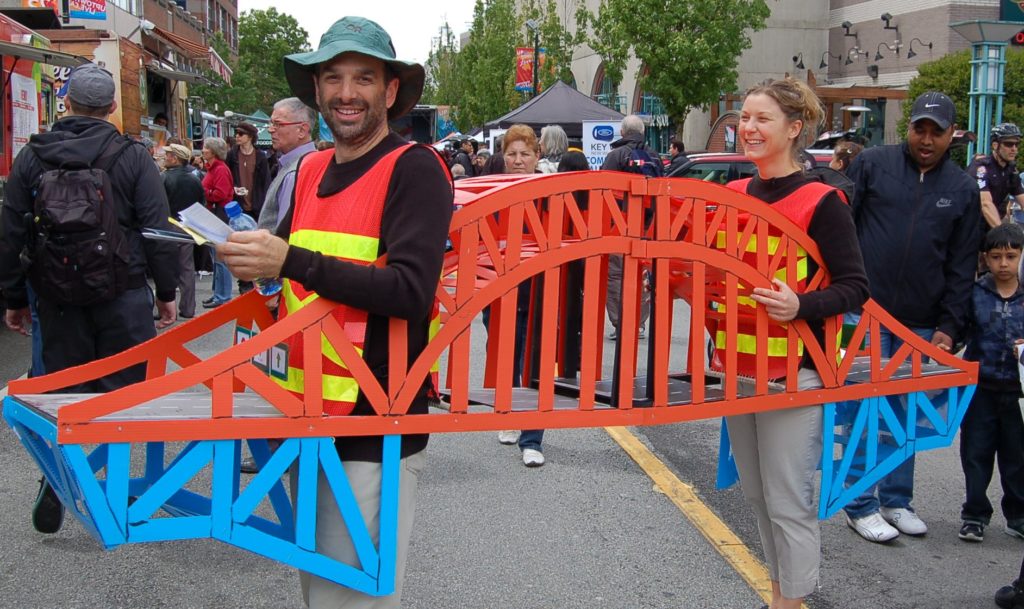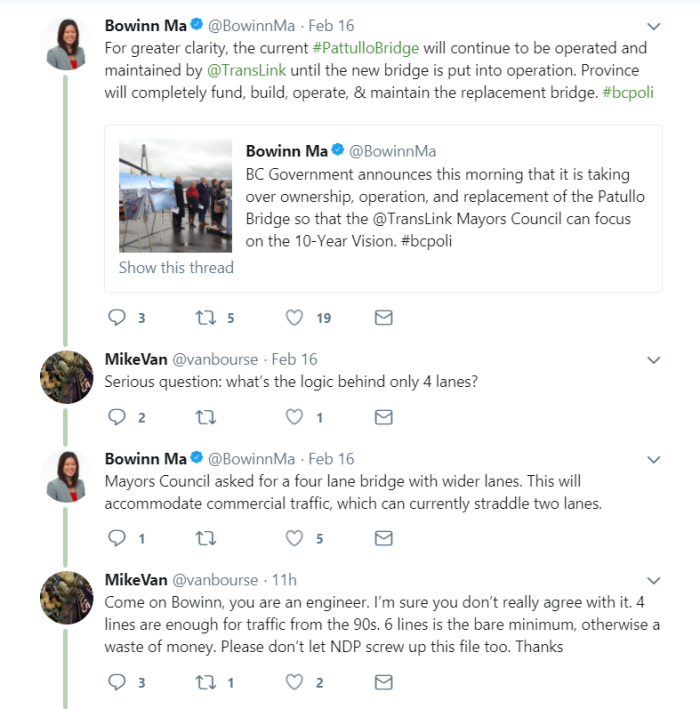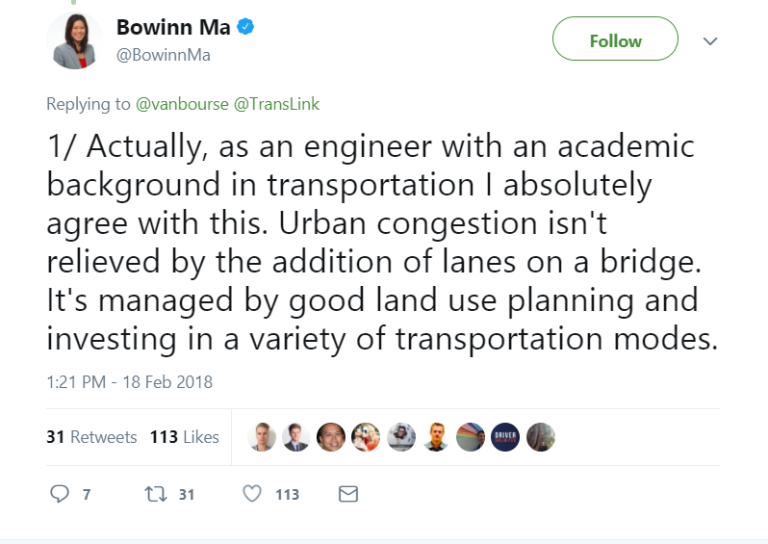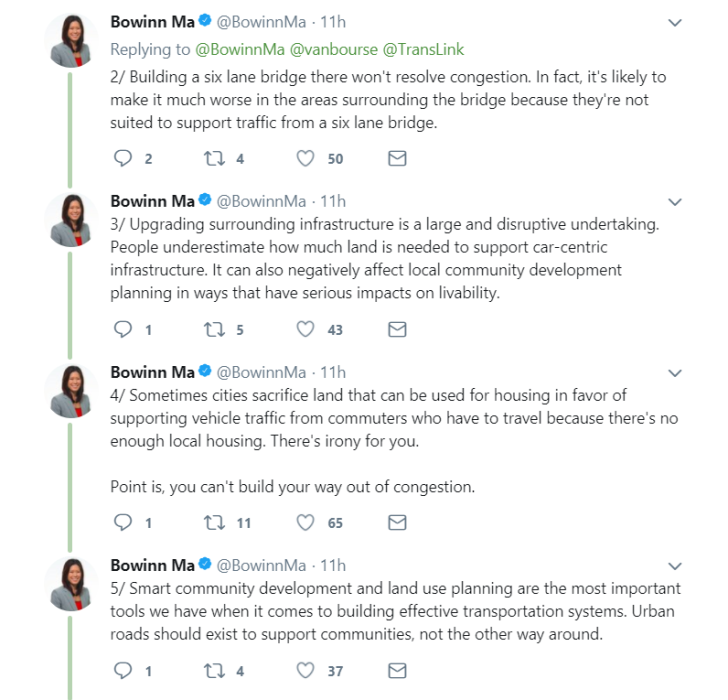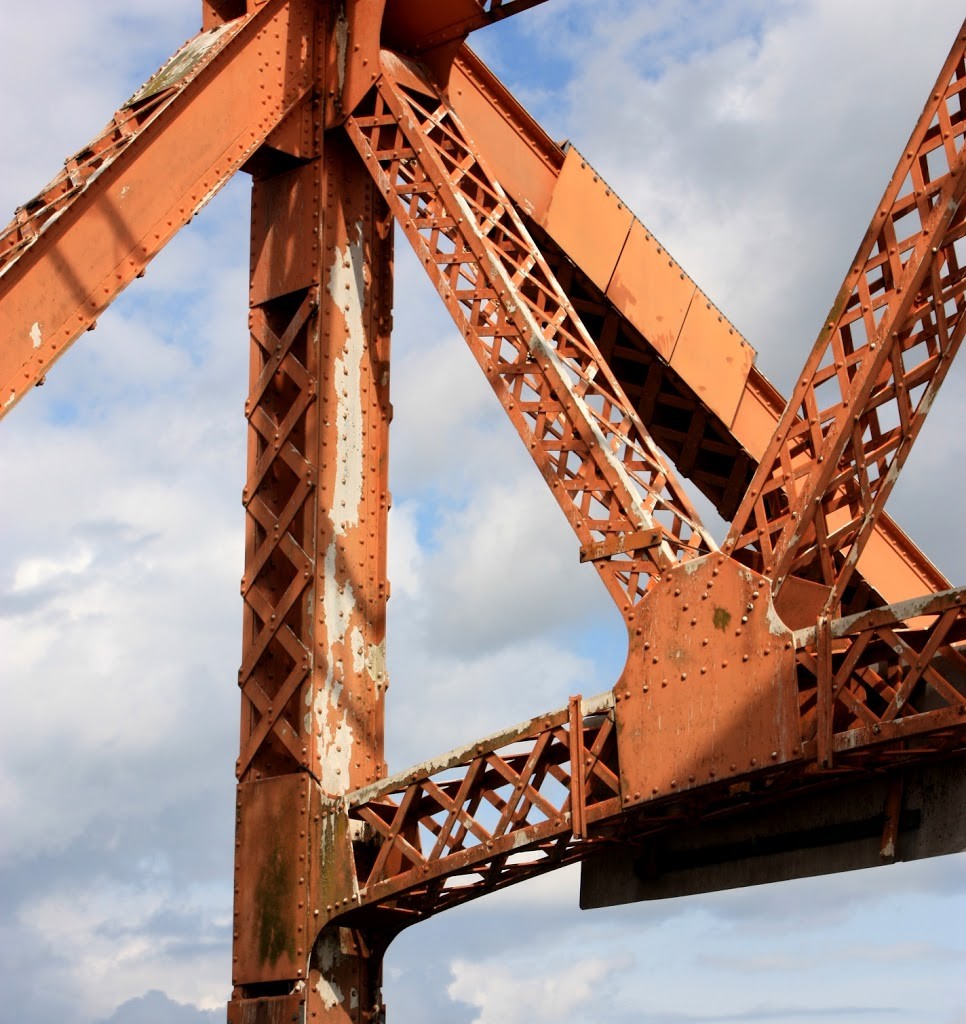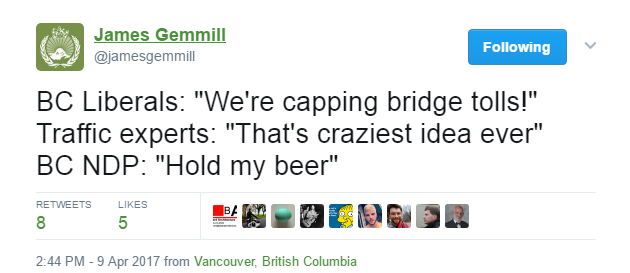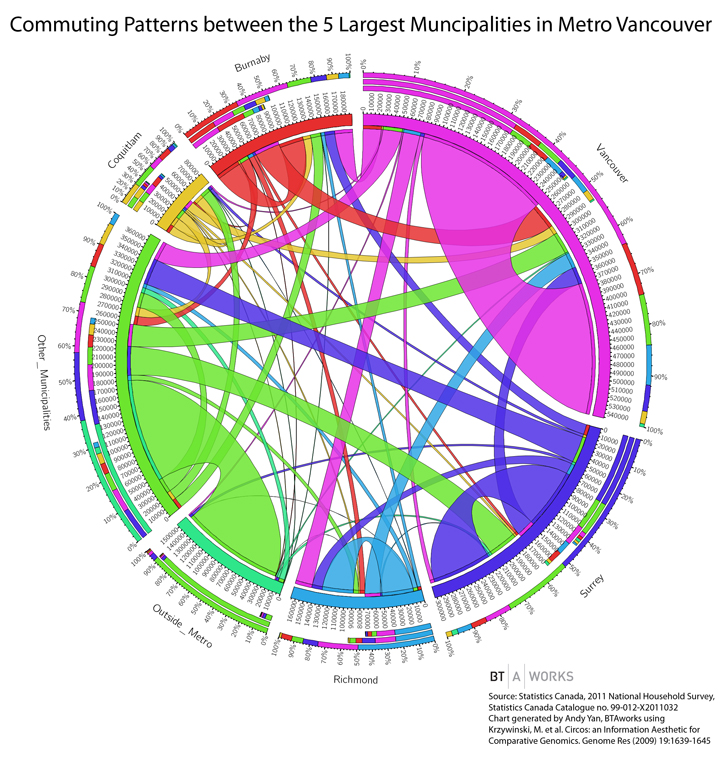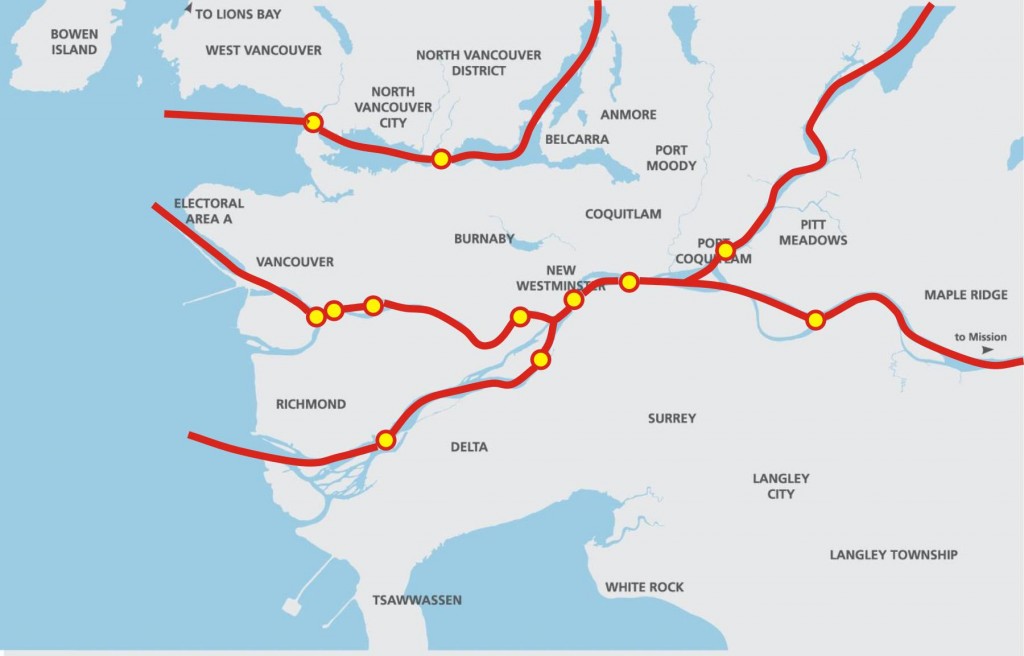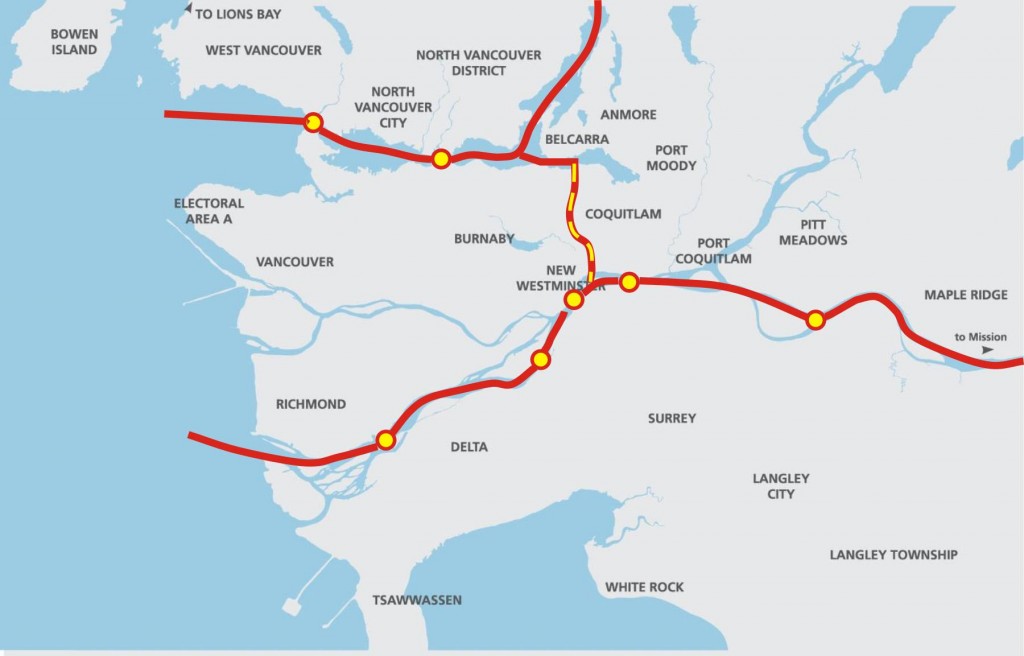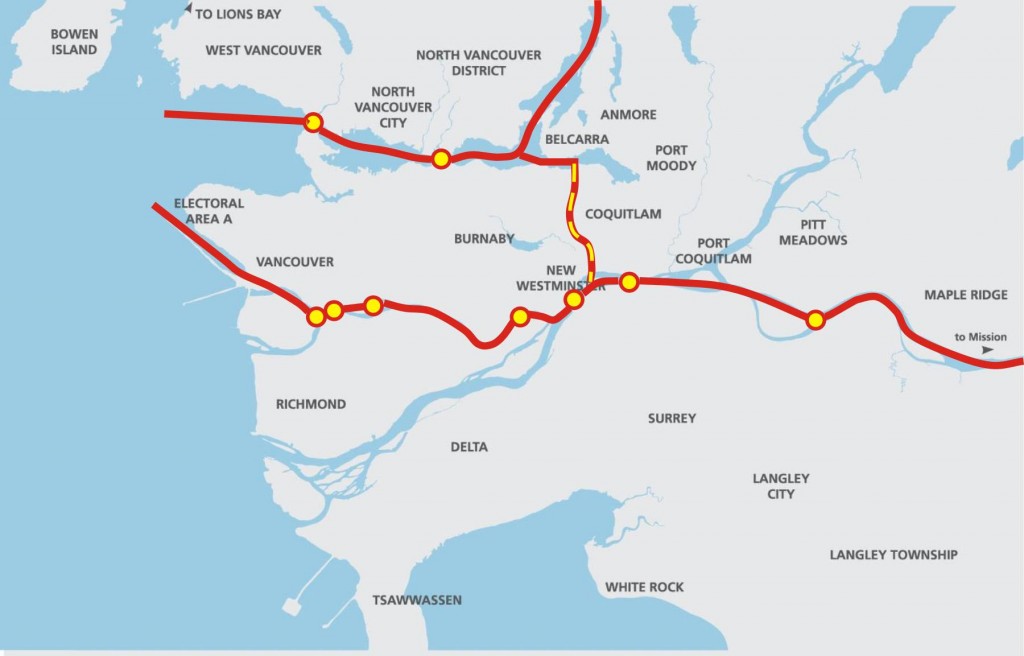I started writing a note to a group I was hoping would support the YES side of the upcoming Metro Vancouver Transportation and Transit Plebiscite, and it turned into a bit of an extended rant. Actually, after re-reading, it appeared to be very un-ranty for me, which first disappointed me, then made me a little proud. So I thought I would share it here (edited slightly for audience). So here is my 1,500ish-word case for the Yes vote.
I’ll list some facts for clarity, then give you my opinions. See if you can tell where it shifts.
The Plebiscite
The Plebiscite asks for a 0.5% increase on the PST to fund a package of transportation and transit capital projects across the Lower Mainland. This money is specifically earmarked for the projects listed in the Mayor’s Plan released last year, and there will be annual independent audits to assure the money is spent as promised.
The Plebiscite will be my mail-in ballot. Elections BC has not released all of the election details yet, however indications are that ballots will be mailed to every person on the Elections BC voters list. To vote you need to be 18, a resident of the area served by TransLink, a Canadian Citizen, a resident of BC for the last 6 months, and you must be registered to vote at your current address. The ballot will be mailed in March, and you will have until the middle of May to return it.
The “Congestion Improvement Tax”
The regional CIT is a 0.5% sales tax that will raise something in the order of $250 Million per year for the next 10 years. The province has committed to matching funds, and suggest the Feds would as well; when these three sources are combined it equals $7.5 Billion over 10 years.
The CIT will cost the “average household” something in the order of $100 per year. The number is hard to parse exactly, because it depends on how much you spend. The average household income for the lower mainland is about $60,000, and if you spend all of this on PST-taxable items (i.e. didn’t buy food, pay rent or purchase haircuts) then your burden would be $300.
To put the tax rate in transit-oriented perspective, if you buy a $1000 television, you will pay $5 in CIT, which is less than the cost of a single 3-zone ride. If you purchase a $34,000 car, the CIT will cost you $170, which is equivalent to a single month 3-zone bus pass.
The Mayors Plan:
After almost two years of discussion, negotiation, and finagling, the Mayors of Metro Vancouver agreed almost unanimously on a planned package of improvements (the Mayor of Burnaby was the only dissenting voice):
3 light rail lines in Surrey, which will connect the King George SkyTrain station to a line along 104th to Guildford Town Centre, a second along King George Highway to Newton, and a third to Langley Town Centre along the Fraser Highway;
1 Broadway Corridor extension of the Millennium Line all the way to Arbutus;
1 replacement Pattullo Bridge. The Plan will provide an important portion of the capital funding to build a new 4-lane bridge, with the balance of the capital coming from tolls;
11 new B-line routes, adding up to 200km of much more frequent service. 3 of these lines are in Surrey, 2 are in the North-east section, the rest are in Burnaby-Vancouver, or connect Burnaby-Vancouver to target destinations (Richmond, UBC, SFU, North Vancouver);
400 new buses, which means more frequent service, extended hours, and higher reliability for everyone who uses busses;
50% increase in Seabus service – more frequency, longer operation al hours;
80% more night bus service;
30% more HandyDart services;
129 additional Skytrain/Canada Line fleet vehicles on existing lines, providing more frequent,
reliable, and comfortable service;
2,700 km of bikeway improvements.
Impact on New Westminster:
The City is in support of this plan because it provides valuable tools for us to achieve the goals of our Master Transportation Plan, and helps meet many of the City’s objectives towards building a more sustainable, inclusive, affordable and livable community.
The Pattullo Bridge plan is a good one for New Westminster. The bridge will be 4 lanes, and will be tolled. Both of these are issues the City has pressed hard and negotiated towards. The bridge will be built to accommodate future expansion to 6 Lanes (and this is the exact language of the agreement) “if need arises, to meet demand increases beyond current forecasts”. The plan does not include funding for this expansion to 6 lanes, and tolling the bridge and providing the alternatives (light rail and B-line expansion South of the Fraser) is our best assurance that the demand increase that would drive future expansion to 6 lanes will not occur.
More frequent SkyTrain and bus service will of course have a huge impact on New Westminster, which has one of the highest per capita transit use rates in the lower mainland. These new buses will turn the tide on “service rationalization” that has seen two bus routes reduced in New Westminster in the last two years. Larger, more frequent SkyTrain cars mean you are more likely to fit in the first train that arrives at 8:00 in the morning at New West Station, instead of trying to decide if the next train might be a little less packed. Increased Night Bus service will have a huge impact on shift workers (think RCH – our largest employer) and night owls. Increased HandyDart service will help keep our community connected and accessible for more people.
However, providing improved transit service to South of the Fraser and the Northeast Sector is also a major “win” for New Westminster, as it provides viable alternatives to people so they do not have to drive through New West on their daily commute. This is not the solution to New Westminster’s traffic problems, but it is a huge step in the right direction.
Plan B:
We cannot talk about the YES side without acknowledging the NO side. What will be the result of a NO vote? Frankly, no-one knows for sure, but we can make some educated guesses.
We can be fairly sure that the scale and pace of expansion offered by the Mayors Plan will not occur. No provincial government interested in staying in government is going to reply to a NO vote from the public by introducing a new taxation scheme to replace what was just voted down. The Mayors could, in theory, decide to fund this plan with property taxes, however if you read the history of how we got to where we are now, the chances of a plurality of Mayors agreeing to that in short order are very slim, especially as they will be under the same pressure as the provincial government to not approve a tax that the people just voted down. (I will ignore for now the public policy argument that property taxes are a terrible way to pay for transit infrastructure).
Note that almost every other alternative to funding proposed by the Mayors (carbon tax recovery, vehicle levy, gas tax increase, comprehensive road pricing program, funding from general revenue) has been nixed by consecutive Ministers of Transportation. It is not as if there wasn’t a Plan B considered, it is that no proposed Plans B have received consensus support.
In New Westminster, a NO vote almost certainly means continued “rationalization” of bus services. The delay at getting rapid transit built in Surrey will put more pressure on the Pattullo and provide incentive for a 6-lane option. The delay in other transit expansion projects mean more people will be forced (note – I didn’t say “choose”) to include driving through New Westminster’s neighbourhoods on their daily commute to Surrey or the Northeast sector. Congestion will increase the cost of moving goods, will erode the livability of our community, and will empower the government to build yet more lanes of unsustainable transportation infrastructure – with your tax money, and without a referendum.
TransLink:
It is important to remember that TransLink is the agency created by the provincial government to operate Greater Vancouver’s regional transportation system. It exists at the pleasure of the provincial government, and is governed by them. The province could disband, re-regulate, or replace TransLink tomorrow, but the region would still require a public transit operator who would operate the expanded capital assets the Mayors Plan will provide.
There may be significant governance issues with TransLink, however those governance issues are not part of this Plebiscite, nor has the province suggested that governance changes at TransLink will result from a YES or NO result. To suggest so is pure speculation with no basis in the public record. TransLink is not running the Plebiscite, nor are they particularly in favour of it. Every indication is that TransLink has the same position as the Mayors (if I may paraphrase: “we wish we didn’t have to go through this exercise to get adequate funding, but if this is the only path provided to us to build our service level, let’s get going).
This Plebiscite will raise funds to build capital projects, and the funds raised are specifically earmarked for the projects proposed. The province and Mayors have agreed to annual external audits and reporting on how the funds are spent, providing a level of transparency and accountability unparalleled in the history of transportation capital budgeting in the province. This money is not going into a TransLink black hole, but into tangible assets we can see operating. If you want to see more accountability in how TransLink spends, this provides it.
In summary
I am very much on the record in my support for limiting the lanes on the Pattullo to 4 lanes, and tolling the bridge; I have advocated for better public transit in New Westminster; I have supported the mode shift goals of the Master Transportation Plan; and I have supported working with our regional partners to build a more sustainable transportation network;
All of these goals are supported by a YES vote on the Plebiscite,
None of them are supported by a NO vote.
So I’m voting YES.
